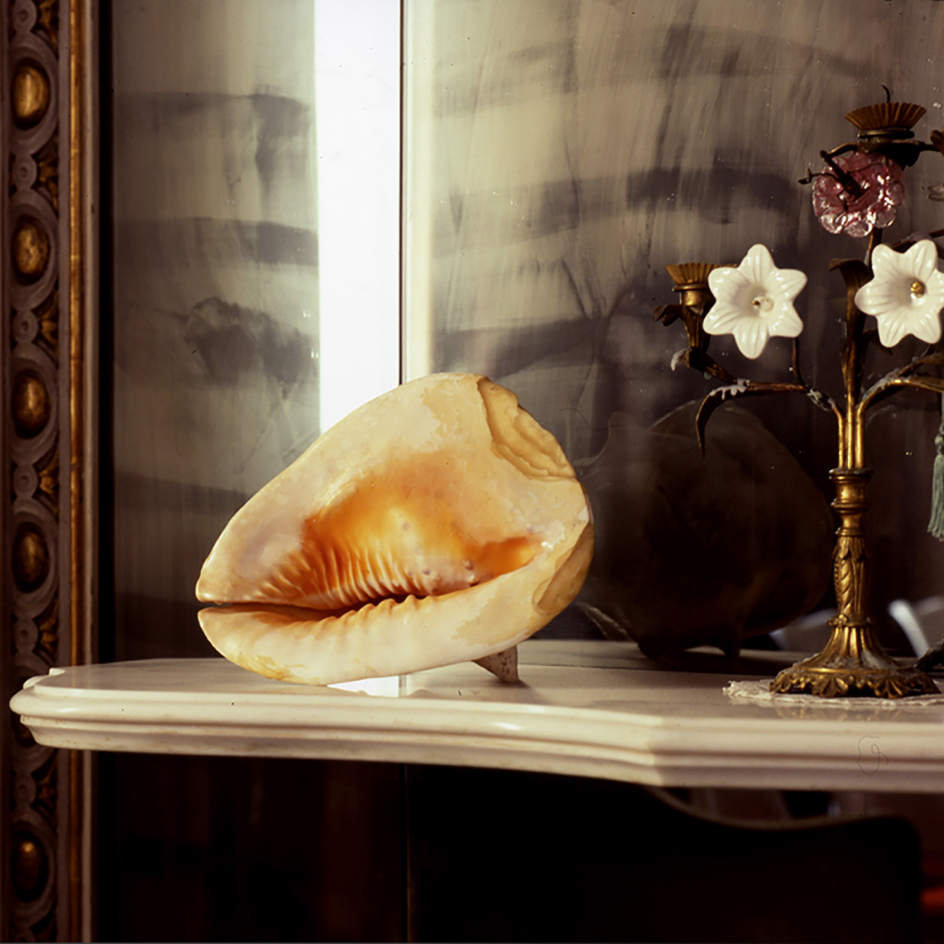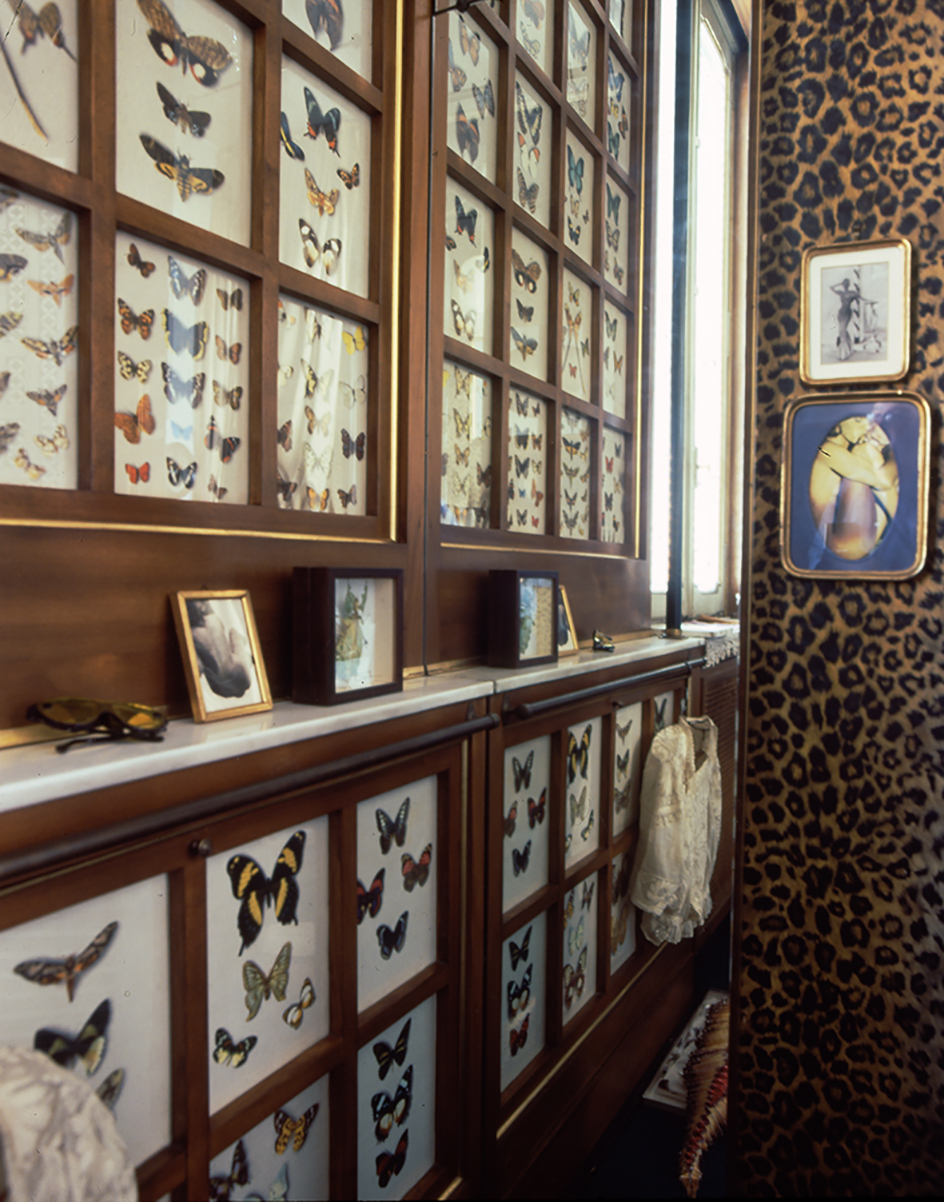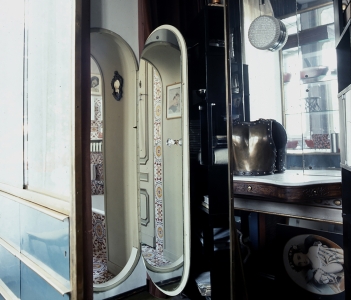Interview to Fulvio Ferrari
Founder of Museo Casa Mollino
Photo by Maurizio Barberis
Carlo Mollino (Turin 1905 – 1973) is one of the most important figures of 20th century culture. Designer, interior designer, architect, photographer, writer and much more. His works are fought over by the biggest collectors, and his prices are constantly rising. What makes his work so topical?
Collectors, mainly international collectors, are crazy about Mollino because his creations are innovative, revolutionary, they are masterpieces of architectural technique and design, they are very rare unique pieces or produced in very limited series, they are works of art that go beyond market trends. Mollino was a free, brilliant artist with boundless talent, who did not belong to any artistic current, did not impose a genre or school, nor did he seek fame and consensus. His archive, preserved in the Carlo Mollino Fund at the Turin Polytechnic, where he obtained the chair of Architectural Composition in 1953, is full of prodigious drawings, which he produced, modified, and perfected in a kind of creative fury. Perhaps his greatest effort was to contain the endless ideas that had to flow out of him like a river in flood.
What was your relationship with the client?
Mollino afforded himself the great luxury of being able to choose in life, and therefore, to be able to select clients and commissions. He inherited from his father Enrico, a well-known engineer and builder, not only a rigorous technical culture, but also a copious financial fortune that allowed him to live in affluence. His professional choices were never dictated by money. For Mollino, building was a pleasure. Rigorous, creative, with clear ideas, he took care of every technical detail. His clients were like him quite original characters, who gave him the opportunity to express himself freely, because Mollino does not simply design and furnish, but expresses a thought, a philosophy, a way of thinking about life, of celebrating beauty. I personally got to know the Russian-born marquis Vladi Orengo, founder of the Orma publishing house, which printed art books during the war, for whom in 1949 Mollino designed the interiors and furnishings of his home in Corso Cairoli, some of the most beautiful ever made and like so many lost. Unfortunately, this is a fate shared by much of Mollino’s work designed for the homes of Turin’s elite, of which we are left only with the photographs he took as documentation and archiving material for his work. Another friend and client of his with an uncommon personality was the engineer Dino Lora Totino, who in 1946 had the vision of digging Mont Blanc, the highest mountain in Europe, and connecting Italy to France with the Tunnel, for which Mollino designed the famous ‘Casa del Sole’ in Breuil-Cervinia between 1947 and 1955, a nine-storey, twenty-apartment building that rises above the landscape (“a steamship in the snow”, as Mollino himself describes it), from which many of the furnishings that passed through the auctions came, all unique pieces in oak and chestnut.
Mollino worked so much for his city between public and private. What was his relationship with Turin?
Mollino was a non-conformist, reclusive and open-minded personality. Mystery hovers around him, and countless stories are told about him, some real, some legendary. His lifestyle was considered eccentric and extravagant. His relationship with the city was not always easy. In 1960, despite appeals from the world of art and culture, the Centro Ippico Torinese, universally considered a masterpiece of 20th century architecture, which Mollino designed in 1936, was thoughtlessly demolished. Over the years, his buildings, such as the Teatro Regio, have been remodelled without respecting his work, losing their compositional unity forever, and none of the many private interiors have been preserved and furnishings sold or destroyed. On the other hand, it was the humus of this city that allowed him to express his vision.
What role do you play in protecting the authenticity of Mollino’s works on the antiques and auction market?
Mollino’s market consists of conoisseurs who live in the cult of his work. His creations are sold for millions, and when faced with such large numbers, the expertise must be absolutely rigorous. With my son Napoleone, we have developed an impeccable tool, so that we can provide all the auction houses in the world with an impeccable and documented attribution, because each piece of furniture has its own history that we are able to reconstruct. Clarity on the market must be maximised. We have been doing this work for twenty-three years with the aim of preserving his work, which is not exempt from forgeries, even sensational ones. In 2009, we published a catalogue raisonné of his work with one thousand five hundred unique models, illustrated by drawings, sketches and archive photographs, for the English Phaidon editions, with the aim of providing maximum clarity around his work.
The Museo Casa Mollino was founded in 1999 to promote knowledge of his work and his multifaceted and eclectic personality. How did the project come about?
This house-museum is intended as a key to understanding the spirit that animated Mollino. Of course, it is not easy to describe such an atypical and multifaceted character, who lived in secrecy, surrounded by mystery. By chance, while I was looking for some of Mollino’s furniture on behalf of a collector in Turin, I came across this flat located in one of the most beautiful areas of Turin, surrounded by greenery and overlooking the Po, in a late 19th-century villa at Via Napione 2. Mollino furnished and renovated this house between 1960 and 1968, but never lived in it. At the time of my research, it had become the studio of a famous engineer, who had carefully preserved several of Mollino’s objects and photographic material, including the now famous Polaroids. I bought the flat in 1985 and what little had survived, without imagining what it was or could become. When Mollino died, without heirs, his entire estate passed to the Italian State, so what this house held as well as the rest was inventoried and partly sold. None of his friends had ever visited this house, nor are there any pictures of its interior, not even in his vast personal photographic archive. All this mystery made me think that somehow this house might represent a kind of philosophical summa of his life, which he therefore jealously guarded. A book helped me: “Il Messaggio della Camera Oscura”, a fundamental text on photographic history and aesthetics, revolutionary and definitive, written by Mollino in 1943 and published in 1949 by Chiantore, which on the dust jacket bears the image of the Egyptian queen Taja, wife of the pharaoh Amenophis III, who, not surprisingly, is said to have been passionate about architecture. What could that representation have to do with the subject matter of the book? Turin, the occult, his passion for the Egyptian civilisation and more generally for ancient cultures and myths, his writings on architecture, made me think that there I could find the key to this house. I asked Silvio Curto, a great Egyptologist, Academician of France and director of the Egyptian Museum in Turin from 1964 to 1984, for help, and he magically revealed to me what the objects enclosed here tell us. And so, the 19th-century bed in the shape of a boat becomes the means leading to the afterlife; the butterflies decorating the walls symbolise rebirth after death; the mirrors reflecting the river flowing outside in front of the villa together with the rose garden and the hill, is life flowing, nature entering into dialogue with the house, and this house, like the pharaoh’s final resting place, becomes the home of eternal life and perpetuity. Everything has been constructed by him with the utmost exactitude, everything has meaning and value. Even in the title of his essay on photography, Mollino gives us a bivalent message that recalls the pyramid, the ‘camera obscura’ as the tomb of the pharaoh who, on his last journey, wants to gather around him all those objects and furnishings that had most meaning in his earthly life. Here, in this temple crowded with symbols, he wrote the meaning of his existence, and what I have tried to do is to understand, interpret through documents, writings, testimonies, archive material, and recompose this house in order to give a key to interpretation that is a viaticum to Mollino’s revolutionary work.





























